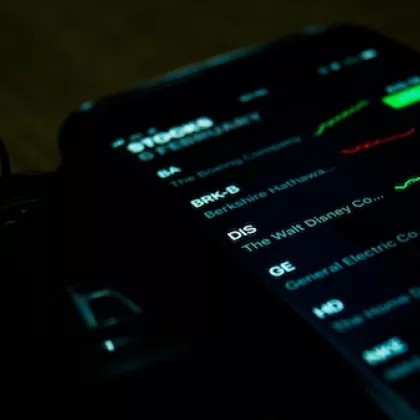The CARES Act: A story of tradeoffs

The CARES Act: A story of tradeoffs
March 24, 2021 | By Dean Sevin Yeltekin
In fiscal policy, as in battle, a blunt instrument is usually better than none at all. That has certainly been the case when it comes to the Coronavirus Aid, Relief, and Economic Security (CARES) Act, the country’s largest stimulus package since World War II.
For researchers like myself with a background in fiscal and monetary policy design, the CARES Act is a once-in-a-generation case study, a historic stopgap that researchers and practitioners alike will analyze for decades to come. At $2.2 trillion in direct aid to individuals and businesses, the CARES Act dwarfs the American Recovery and Reinvestment Act of 2009, which funneled $831 billion into the U.S. economy through tax cuts and spending programs.
The federal government must tread carefully in designing fiscal policy, especially policy as ambitious and far-reaching as the CARES Act. Ideally, a well-designed economic package will provide a high return on its investment while minimizing the introduction of unintended consequences and distortions. The solution to one problem can easily produce a new crop of new problems.
Recognizing the good in CARES.
While CARES Act didn’t achieve its aims without some repercussions, it did manage to achieve them in record time. As COVID-19 began to batter the fortunes of individuals and businesses from coast to coast, help arrived:
Economic impact payments—Beginning in April 2020, American households received $1,200 per adult for individuals whose adjusted gross income was less than the phase-out threshold of $75,000 ($112,500 for head of household and $150,000 married) and $500 per child under 17 years old. The payment amount was reduced by $5 for every $100 that a taxpayer's income exceeds the phase-out threshold.
Expanded unemployment benefits—The CARES Act increased weekly unemployment benefits by $600 and changed the maximum number of weeks an individual may receive benefits.
Emergency Rental Assistance Program—A $25 billion fund provides grants for households that are unable to pay rent and utilities.
Paycheck Protection Program (PPP)—Administered by the Small Business Administration, the PPP covers up to eight week of payroll costs, including benefits, for small businesses.
Emergency Capital Investment Program—Community financial institutions received a collective $9 billion to support their efforts to bolster small businesses and consumers in low- and moderate-income communities.
From a 30,000-foot-view, the CARES Act hit the mark. By Q3 of 2020, the U.S. economy bounced back, largely due to the infusion of badly-needed funds into checking accounts across the country. A recent study concluded that on average, the CARES Act mitigated economic welfare losses by around 20 percent. Other researchers have determined that the stimulus package may have helped keep close to 12 million people from falling below the poverty line.
Asking the hard questions.
In moments of crisis, policymakers face the unenviable task of weighing tradeoffs—in this case, the primary tradeoff was between speed and precision. After COVID-19 reached our shores, they opted for a quick, blunt instrument that made up in speed what it lacked in nuance. Though the CARES Act succeeded in pulling back the US economy from the brink, its rollout raised several key concerns.
Did Economic Impact Payments reach the individuals and industries it was intended to help?
Statistically, lower-income Americans have a higher marginal propensity to consume rather than save. In other words, they tend to spend the income they receive and make a larger impact on the overall economy. The CARES Act erred on the side of generosity by sending Economic Impact Payments to individuals earning up to $99,000 (or $198,000 for joint filers). As anticipated, recent survey results released by the US Census Bureau revealed that households with incomes between $75,000 and $100,000 were more likely than the average household to use their stimulus payments to pad their savings accounts or pay off debt.
We also know that during COVID-19, the sale of durable goods like household items rose significantly while spending on hard-hit sectors like retail, hospitality, and travel declined. As more data becomes available, we will be able to evaluate the extent to which Economic Impact Payments truly reached those most in need.
Did businesses receive fair access to funding?
The Paycheck Protection Program (PPP) required companies to request and receive loans through their own financial institutions. Inevitably, medium and large companies with well-established relationships with competent banks were able to secure funding more quickly than the small mom-and-pop shops down the street. By the time the first stream of PPP funding ran dry, some applicants still hadn’t received any aid. The program’s infrastructure certainly streamlined the funding distribution process, but it may have inadvertently disadvantaged some of the companies in the greatest distress.
To what extent are we prolonging the inevitable?
Recession has the same effects of a forest fire as it sweeps through an economy to clear out the most unproductive companies. While failure is devastating to an individual business, it’s integral to a healthy, growing economy. The CARES Act has provided essential support to struggling businesses, many of which were forced to close in response to government mandates. On the other hand, to what extent has it propped up uncompetitive companies and, in the process, failed to clear the way for a new batch of companies to take their place?
How are we going to pay for this?
Federal revenues totaled $3.5 trillion in 2019. The CARES Act alone consumed more than half of those revenues and piled on to the national debt. After 18 months, the debt-to-GDP ratio is projected to increase by about 12% above its pre-pandemic level, compared with an increase of 3% without the CARES Act. In previous crises like World War II, the US paid off its debt largely through massive economic growth in the postwar years. While our economy is rebounding, the jury is still out on whether or not we will experience the level of sustained growth that is required to ease the growing debt burden without resorting to significant tax hikes and spending cuts.
Moving forward.
If I had to rate the overall effectiveness of the CARES Act, I would give it a solid B. The tradeoff between speed and nuance has compromised efficiency in some ways, but the stimulus package provided a vital economic lifeline to millions of individuals and businesses at the right time.
Researchers are still collecting and dissecting the aggregate and distributional impact of CARES Act provisions and use the findings to craft more targeted, effective policy for future economic shocks. In the meantime though, in mid-January 2021, President Biden unveiled the American Rescue Plan, a $1.9 trillion proposal that would extend and expand elements of the CARES Act, including an additional $1,400 per adult in direct individual payments and the extension of pandemic unemployment benefits. It also includes an additional $300 billion in weekly jobless benefits through September and an expanded tax credit of up to $3,600 per child, initially distributed in monthly installments. The child tax credit could raise 4 million children out of poverty, according to an analysis by the Center on Budget and Policy Priorities.
More than $50 billion will be distributed to small businesses, including $7 billion for the Paycheck Protection Program. The bill also provides $25 billion for relief for small and mid-sized restaurants, which have suffered significantly during the pandemic.
The plan was approved and signed into law just last week (March 11, 2021), so it’s far too early to measure the bill’s impact, but hot debates regarding its targets, its potential burden like inflation and rising public debt are gaining even more speed. With my red pen in hand, I am ready to give at least a preliminary grade for the American Rescue Plan in my next post, so stay tuned.

Sevin Yeltekin, Dean
March 24, 2021











